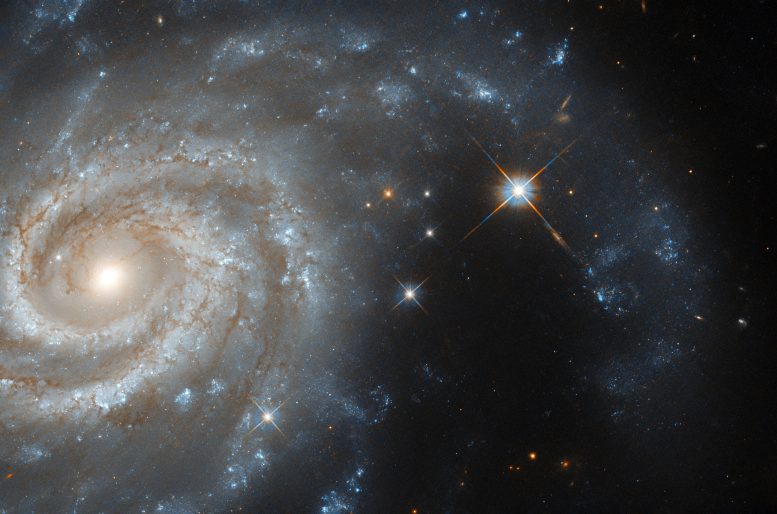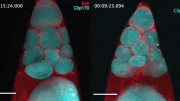
This Hubble Space Telescope image features the spiral galaxy IC 438, located 130 million light-years away in the constellation Lepus. Surrounded by constellations such as Canis Major, Orion, and Canis Minor, Lepus is part of the 88 constellations officially recognized by the IAU, which divide the night sky into distinct regions for easier identification of celestial objects. Credit: ESA/Hubble & NASA, R. J. Foley (UC Santa Cruz)
The Hubble Telescope’s study of the spiral galaxy IC 438 in the constellation Lepus sheds light on the aftermath of a type Iax supernova, enriching our understanding of celestial dynamics.
This image shows the spiral galaxy IC 438, which lies about 130 million light-years from Earth in the constellation Lepus (the Hare). Lepus lies just south of the celestial equator (the ring around the middle of Earth that falls at right angles to its rotation axis). Appropriately, Lepus is flanked by the constellations Canis Major (the Greater Dog) and Orion (the Hunter), whilst Canis Minor (the Lesser Dog) lies very nearby, meaning that in artistic representations of the constellations, Lepus is often shown as being pursued by Orion and his two hunting dogs.
Lepus is one of the 88 constellations that are officially recognized by the International Astronomical Union (IAU). It is worth clarifying that, while the actual constellations themselves only comprise a handful of stars, the area of sky covered by those stars is often referred to using the name of the constellation. For example, when we say that IC 438 is in Lepus, we do not mean that the galaxy is part of the constellation — perhaps obviously, as it is not a single star, but an entire galaxy! Rather, we mean that it falls in the region of sky covered by the Lepus constellation stars.
The IAU’s 88 official constellations are by no means the only constellations ever described by humanity. Humans have been studying and naming the stars for a very long time, and different cultures of course have their own constellations. The IAU constellations are Eurocentric, with many taken from Ptolemy’s list of constellations. Collectively, the 88 constellations divide the night sky into 88 regions which completely cover it, so that the approximate location of any celestial object can be described using one of the 88.
The impetus behind Hubble’s examination of this galaxy was a type Iax supernova that took place in 2017, a kind of supernova that arises from a binary system of two stars. While this data was obtained over three years after the supernova occurred, so it’s not visible in this image, there’s still a lot to learn from studying the aftermath of supernovae like this one.









Be the first to comment on "Chasing Galaxies in Lepus: The Hunt for Supernova Secrets"